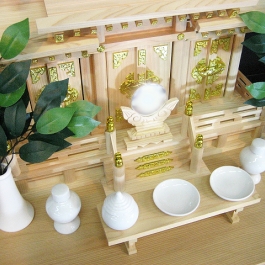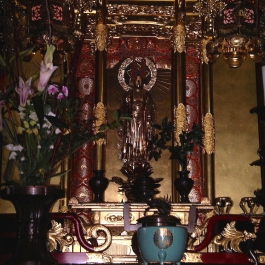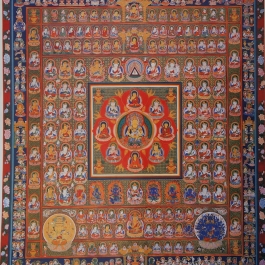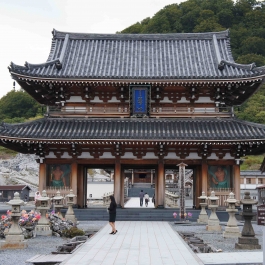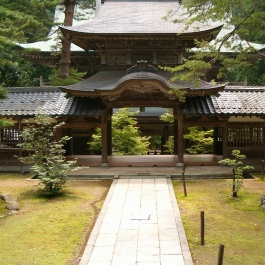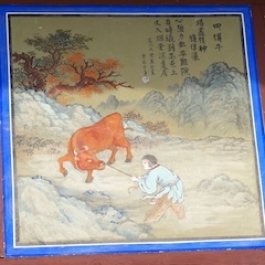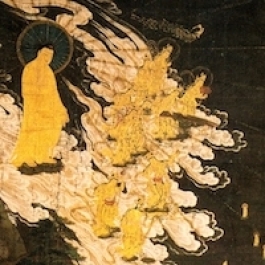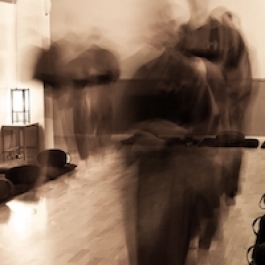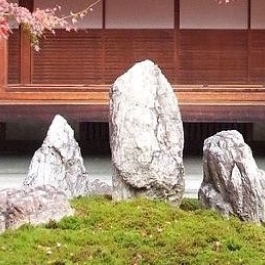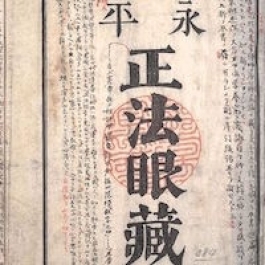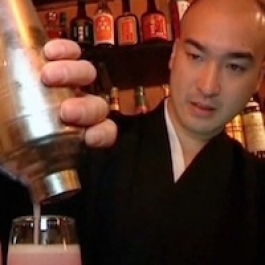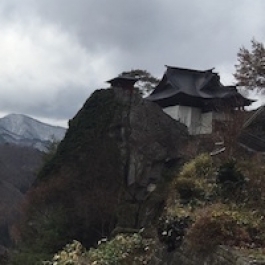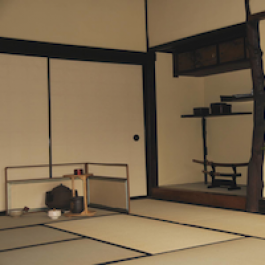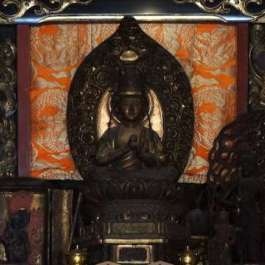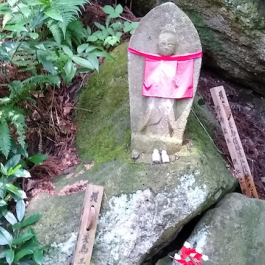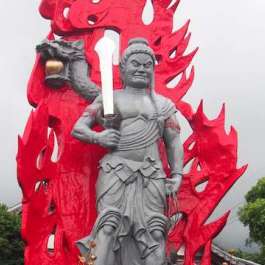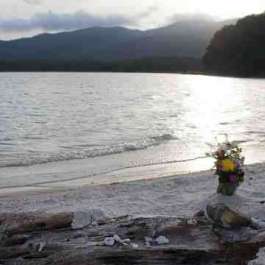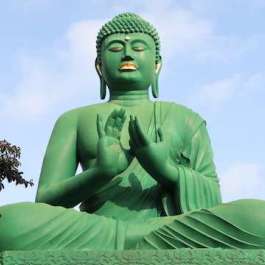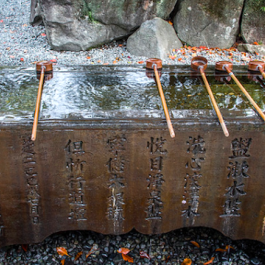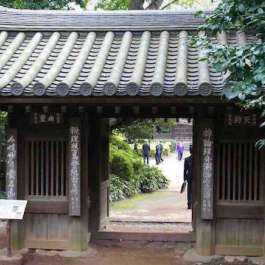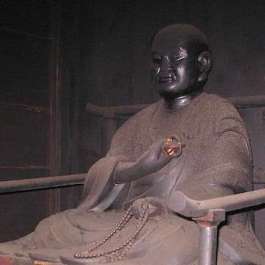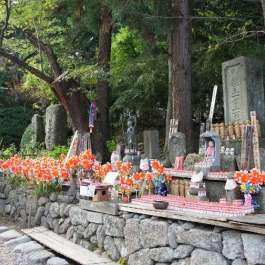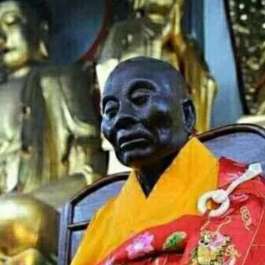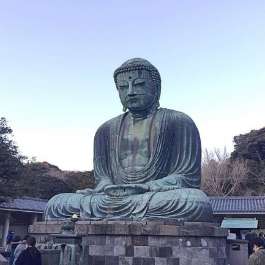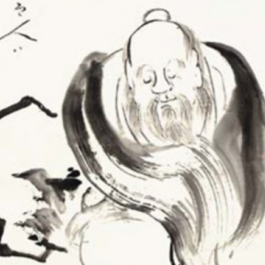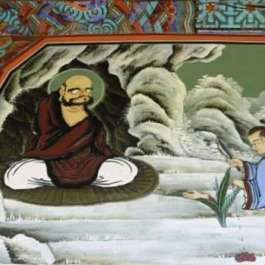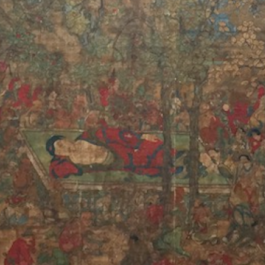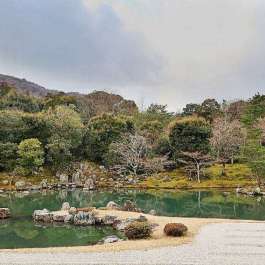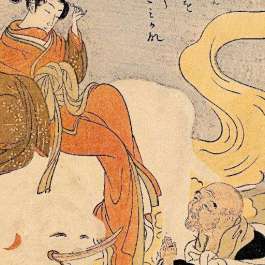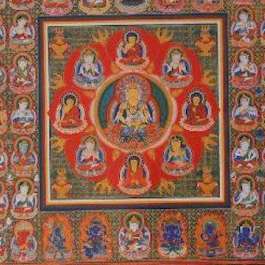
Kukai: Major Works Paperback – October 15, 1972
by Kūkai (Author), Yoshito Hakeda (Translator)
4.3 out of 5 stars 23 ratings
Kukai, more commonly known by the honorific Kobo Daishi, was one of the great characters in the development of Janpanese culture. He was active in literature, engineering, calligraphy, and architecture and is represented in this work in terms of his major effort--the introduction of esoteric Buddhism from China, which resulted in the formation of the Shingou sect still active in Japan. Eight of his works are presented here.
303 pages
Customers who viewed this item also viewed
Page 1 of 6Page 1 of 6
Previous page

The Weaving of Mantra
Ryûichi Abé
4.8 out of 5 stars 11
Paperback
22 offers from $45.51

Shingon Texts (BDK English Tripitaka)
Rolf W. Giebel
4.6 out of 5 stars 14
Hardcover
4 offers from $40.00

Jitsugokyo: The Wisdom of Kobo Daishi
Kobo Daishi
4.0 out of 5 stars 2
Paperback
7 offers from $11.95

Shingon: Japanese Esoteric Buddhism
Taiko Yamasaki
4.0 out of 5 stars 12
Paperback
4 offers from $50.00
Next page
Explore similar books
Tags that will help you discover similar books. 4 tags
sacred writingshistory & criticismreligion & spiritualitycriticism & theory
Page 1 of 6Page 1 of 6
Previous page
 Essays in Idleness and Hojoki (Penguin Classics)Essays in Idleness and Hojoki (Penguin Classics)
Essays in Idleness and Hojoki (Penguin Classics)Essays in Idleness and Hojoki (Penguin Classics)122
Paperback
$16.09$16.09
 The 88 Temples of Shikoku: A Guide for the Walking PilgrimThe 88 Temples of Shikoku: A Guide for the Walking P…
The 88 Temples of Shikoku: A Guide for the Walking PilgrimThe 88 Temples of Shikoku: A Guide for the Walking P…7
Paperback
$26.93$26.93
 Shingon Texts (BDK English Tripitaka)Shingon Texts (BDK English Tripitaka)
Shingon Texts (BDK English Tripitaka)Shingon Texts (BDK English Tripitaka)14
Hardcover
 Moon In a Dewdrop: Writings of Zen Master DogenMoon In a Dewdrop: Writings of Zen Master Do…
Moon In a Dewdrop: Writings of Zen Master DogenMoon In a Dewdrop: Writings of Zen Master Do…108
Paperback
$13.99$13.99
 Shingon: Japanese Esoteric BuddhismShingon: Japanese Esoteric Buddhism
Shingon: Japanese Esoteric BuddhismShingon: Japanese Esoteric Buddhism12
Paperback


Next page
Where do clickable book tags come from?
Editorial Reviews
Review
Kukai was a polymath who has achieved the status of demigod in popular legend: in part because of his virtuosity as a writer of Chinese, his books are too difficult to read by any but a very few scholars in Japan today. Hakeda's achievement in arriving at these lively and intelligible translations is of the highest order. ― Choice
This book serves two functions remarkably well: being an easy to follow, lucidly written introductory work for the non-initiated, and providing for the expert for the first time in English eight of Kukai's major works. ― World Literature Today
About the Author
Hakeda was Associate Professor of Japanese in the Department of East Asian Languages and Cultures and Associate Professor of Religion at Columbia University. Ryuichi Abe is the Reischauer Institute Professor of Japanese Religions in the Department of Eas Aisan Languages and Cultures at Harvard University.
Product details
Publisher : Columbia University Press; Reprint edition (October 15, 1972)
Language : English
Paperback : 303 pages
ISBN-10 : 0231059337
ISBN-13 : 978-0231059336
Item Weight : 1.05 pounds
Dimensions : 8.9 x 6 x 0.9 inchesBest Sellers Rank: #67,686 in Books (See Top 100 in Books)#24 in Buddhist Sacred Writings (Books)
#316 in Literary Criticism & TheoryCustomer Reviews:
4.3 out of 5 stars 23 ratings
Customer reviews
4.3 out of 5 stars
4.3 out of 5
23 global ratings

Doug M
5.0 out of 5 stars A comprehensive, accessible look at Kukai and ShingonReviewed in the United States on July 27, 2011
Verified Purchase
Kukai, more commonly known in Japan as "Kobo Daishi" or just "Odaishisama" is one of the pre-eminent figures in Japanese Buddhist history. His life and his work are still the stuff of legend in contemporary Japanese culture, as well as the Buddhist world there. What makes Kukai such an extraordinary figure was his talent for grasping difficult Buddhist teachings, but eloquently teaching them to a wide variety of people through his writings and through the esoteric rituals in Shingon Buddhism.
Books on Kukai in English are few and often scholarly, and difficult to read, but Professor Hakeda's book is a look both at the life and accomplishments of Kukai, an overview of his teachings, but also translated samples of his writings. The history and teaching sections alone are interesting, and worth a read, but it's also a great opportunity to read Shingon Buddhist writings that are otherwise very difficult hard to find outside of Japan. Kukai was a master of esoteric Buddhism, so at times his writings can seem very obtuse (hence the need for training under a reputable Shingon priest in good-standing), but other times his writings are brilliantly Buddhist and really speak to important matters.
For those looking for a broad overview of Kukai and his teachings, this is a great place to start.
18 people found this helpful
HelpfulReport abuse
Gretchen Hintz
5.0 out of 5 stars Brilliant biography on KukaiReviewed in the United States on April 2, 2009
Verified Purchase
I'm currently researching famous Japanese figures for a novel I'm writing. I purchased a few books focused on Kukai and Shingon Buddhism and this was definitely the most informative in getting a real understanding of Kukai, Shingon Buddhism, and the impact Kukai made upon Japan. The book is very thorough and feels incredibly authentic. Kukai made such a huge impact on Japan and it's sad that most of the western world does not even know he existed. This book was easy to pick up and read. Even one who barely understands Buddhism in general could benefit from this book, though it does go in-depth for the more experienced reader/researcher.
14 people found this helpful
HelpfulReport abuse
Dara
5.0 out of 5 stars ... teh history of the Shikoku Pilgrimage this is a wonderful book.Reviewed in the United States on July 8, 2015
Verified Purchase
If you are interested in teh history of the Shikoku Pilgrimage this is a wonderful book.
One person found this helpful
HelpfulReport abuse
Amazon Customer
4.0 out of 5 stars Four StarsReviewed in the United States on May 30, 2017
Verified Purchase
indepth knowledge
HelpfulReport abuse
Lord Kuz
2.0 out of 5 stars Not the highest standard that Kukai's life and philosophy/thought deserves.Reviewed in the United States on October 31, 2013
A rather emotionless treatment of the life of Kobodaishi / Kukai, Shingon Buddhisms founder. Although this is primarily a translation of some of Kukai's work - the lead up chapters that deal with his life and thought, are not very extensive and lack emphasis on the importance of his life and work.
I expected the actual writings of Kukai to be heavy going, and that is certainly so, especially with a severe lack of reference or footnotes. What is given, tends to assume that the reader is already well versed in Taoist and Confucian writings and thought. I found myself constantly searching through other texts to gain some more information on terms and references, that could have been provided by the author - if he had been a bit more dedicated to writing a in depth study of the subject.
Most disappointing is the lead in chapters that give an account of Kukai's life and his philosophical thought. It is adequate from the point of view of a novice researcher of Shingon, but why such a person would be reading the full texts of Kukai's writings is a mystery. I feel that Kukai's life is of far more importance than is given - and the style of writing there, seemed even more heavy going than the actual text of Kukai's "esoteric" writings.
On the positive side, a student of Shingon needs to eventually read the full words and works of it's founder - and even for native English speakers who have acquired some mastery of Japanese, are going to need an English translation. So I do not regret purchasing this book - but will seek and recommend other publications to compliment an understanding of this subject.
7 people found this helpful
HelpfulReport abuse
Unknown
5.0 out of 5 stars A must have!Reviewed in the United States on November 30, 2013
One of the best English-language resources available on the life and work of Kukai. If you're interested in Japanese buddhism then you should have this book. Further, the first 100 pages or so of this book are a great primer for the more extensive work,
2 people found this helpful
HelpfulReport abuse
Amazon Customer
4.0 out of 5 stars A Look at the Life, Though and Works of Kobo Daishi KukaiReviewed in the United States on May 10, 1999
There has perhaps been no other more influential force in Japanese religious and societal beliefs than Kobo Daishi Kukai. This book tells the life of this colorful saint of the Japanese people, and presents an explanation of his thoughts and teachings. Here, the major religious writings of Kukai are translated, allowing the reader to glimpse at the depths of Japanese esoteric thought.
22 people found this helpful
HelpfulReport abuse
See all reviews
Top reviews from other countries
Translate all reviews to English
Renato Alahmar
4.0 out of 5 stars Expansão da ConsciênciaReviewed in Brazil on February 1, 2019
Verified Purchase
Ajudou muito na minha Jornada de estudos durante 2 meses na região de Shikoku - Japão
Report abuse
Translate review to English
永澤 護
5.0 out of 5 stars 最高の入門書Reviewed in Japan on September 14, 2019
Verified Purchase
空海の主要著作の英訳と空海に関する論考。これ以上の入門書は和書以外ではないだろう。昨日から読み始めた。本書23頁で著者の羽毛田義人氏は空海の処女作「三教指帰」が引用・示唆的指示をしているものとして特に法華経、華厳経、大乗起信論を挙げている。少なくてもこの三つが若き日の空海の、従って彼の生涯の土台だということだ。
Report abuse
Translate review to English













